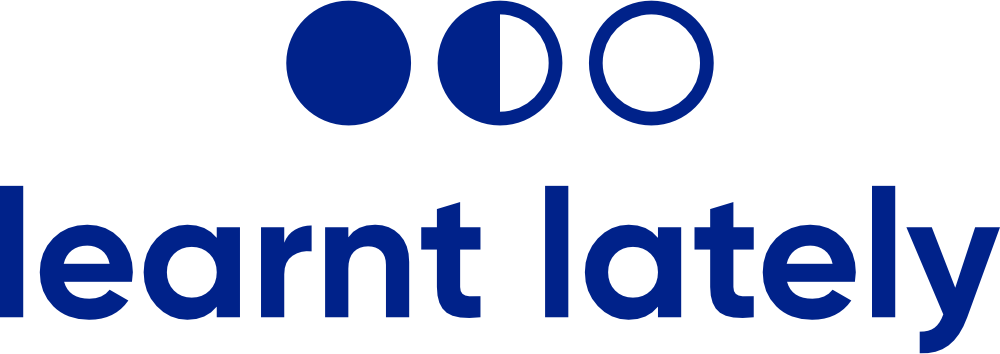New thinking for old training budgets
A typical business has various challenges which make it problematic - there might be outdated technology, system failures, broken processes as well as a shortcomings in human capability and compliance. Commonly, we deal with technical and system failures by investing in upgrades. It surely makes sense that we should deal with human capability issues in the same manner, i.e. through investment in development and training, whether this is elearning, online or face to face.
In this post we catch up with Cornell Tsiang, Strategy & Finance Consultant, to learn a contemporary approach to setting training and development budgets and how to calculate the return on such investment.
Cornell Tsiang, Strategy & Finance Consultant
Investing in human capital
Upgrading technology and systems is business critical so we are prepared for the future investment required. But updating our human capital, through training and development, is not immediately apparent, hence we are not as ready to assign budget, despite the fact that our human capital is our most valuable asset and a vital competitive advantage.
On top of this, as the talent market tightens, it pays to remember that learning and development opportunities rate as the third most important factor to new hires. Salary benefits and career advancement opportunities are the two leading factors.
All good reasons to view our human capital through the same lens as any other resource - one that requires updating and periodic investment.
Let’s jump in.
Traditional training budgets
Q: For the record, how are training budgets traditionally worked out?
A: There are three traditional ways to work out a training budget that focus on percentages of known metrics, for example training budget as a percentage of revenue, as a percentage of salary or training budget per employee.
Assigning budgets using blanket percentages is simplistic. Using this outdated methodology indicates that training is regarded as an afterthought. Consequently, when budgets are tightened, it’s training that gets the cut. However, measuring the success of your training investment (and therefore justifying the cost year on year) is difficult since business success is impacted by a confluence of factors beyond training - such as strategy, leadership and business models.
A more helpful way to look at a training budget is to review how an investment in training, or elearning, can save you money by improving your people and business, and prevent the loss of talent, customers and business knowledge. By changing the way you approach your training budget you may also find that the ROI metrics you’re looking for are found more easily.
Presenting a strong case for budget
Q: When you’re asked to allocate a training budget, what presents a strong case?
A: I need to hear how the training will solve or improve a business problem and I need to understand that the proposed training is the most efficient way to solve it. While it’s usually better to develop the talent you have rather than buy in new talent, there are calculations that I use to check for the most cost effective strategy.
Training has to solve a business problem and be the most effective solution.
Drivers behind a training budget
Performance issues
Q: When there’s performance issues, should a business retain and develop existing talent or should they recruit new talent?
A: Good question. What we’re really talking about here is capabilities. Improving capabilities is a big driver behind training budget allocation.
Here’s a common scenario: the sales team isn’t hitting its targets and the issue, in part, can be attributed to a lack of sophistication in presentation skills. This underperformance issue is easily addressed with a training program, and from an executive viewpoint, it’s instinctively preferable to retain existing talent. Mostly, retention is always lower cost, it doesn't interrupt the business and you don’t experience knowledge loss as employees walk out the door.
In the event that the existing talent is not performing well, I would rely on this formula to determine the ROI on retaining talent versus recruiting new talent.
A = performance correction training cost
B = cost of hiring (new talent)
C = cost of onboarding (new talent)
D = cost of ramp up time (new talent)
First look at the cost of the training (A) which the existing talent needs to upskill or improve their performance. Then divide the training cost by the summative cost of new talent hiring, onboarding and ramp up time.
A / (B+C+D) = X
The closer figure X is to figure A, the less attractive the talent retention proposition becomes and the more attractive a new hire becomes.
Developing existing talent is always preferred over acquiring new talent - so test this option first.
Scaling
Q: When a business is in extreme growth mode, should they develop their existing talent or buy in new, highly skilled talent to hit new targets?
A: This scenario focuses on scaling. When a company grows, expands or there’s a new mission, you may begin debating how to achieve the new performance goals. Can the human capital you have take the business to where it needs to go or do you need to buy in new talent?
It’s good to remember that developing talent, versus buying highly skilled talent, can be more cost effective, but when there’s rapid scaling, this decision may be taken out of your hands. There simply may not be the time to invest in training existing talent and the only option might be to buy in the skill you need.
When faced with this scenario, one useful formula to use may be as follows.
A = upskill training cost
B = cost of new talent
C = cost of existing talent
Take the upskill training cost (A) and divide it by the cost of the new talent (B) minus the existing talent (C).
A / (B-C) = X
The closer the total figure X is to A, then the stronger the bias may lean towards acquiring, more highly skilled talent. One of the biggest challenges in this scenario is weighing the time to upskill existing talent against the time to onboard new talent. While there is an instinctive preference to develop existing talent to reduce business disruption there’s always a strong temptation to bring in new talent with new ideas.
Training budget as a percentage of expected outcome
Q: Can I set my training budget as a percentage of the expected training outcome?
A: Yes, you can. While we started this discussion by stating that blanket percentages were too simplistic, setting your training budget as a percentage of the expected training outcome is a valid methodology. In order to identify an allocation amount, you’ve had to work through your business targets, training costs and the likely performance outcomes. This ensures that the budget isn’t just a baseless allocation with no expected ROI.
Most training is required because the business has identified a situation that needs improving. Think along the lines of:
Increasing customer satisfaction
Increasing compliance with safety processes
Reducing new-starter churn
Reducing mistakes or errors
A business can meet goals, such ‘a 10% decrease in errors’, through behaviour change training. With specific behavioural targets set against the training program, you can begin to produce measurable results from your training efforts. Being able to point out solved business problems, such as less mistakes or errors, for example, can be used as proof that your training is working.
Step 1 Set your training outcome goal i.e. 10% less errors.
Step 2 Work out how much money will be saved by the business/cost centre per year if the team meets the new performance target i.e. 500 less hours of remedial phone calls per year (500 x cost of resource).
Step 3 Set the training budget as a portion of that savings.
Set behavioural targets against your training and highlight solved business problems as part of your ROI.
You can talk about training and development all you like but at the end of the day people always want to know how much it will cost and what tangible benefits they will get. If the initiatives are not generating revenue, or tangibly improving profitability, it proves very difficult to get training budgets allocated.
Whether your training takes the form of elearning, online or face to face, investing in your human capital should be an ongoing part of your business model. These methodologies are simply the tip of the iceberg but provide food for thought and offer an alternate view away from the traditional way of determining training budgets.
Do you have an elearning project you want help with?
Learnt Lately specialises in developing custom elearning courses. Our mission is to build better elearning that drives better business so you can develop skills and knowledge where you need it most.
For more information contact us on 1300 086 692 or visit email us today.






